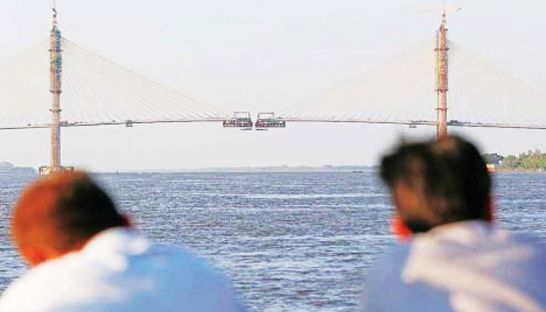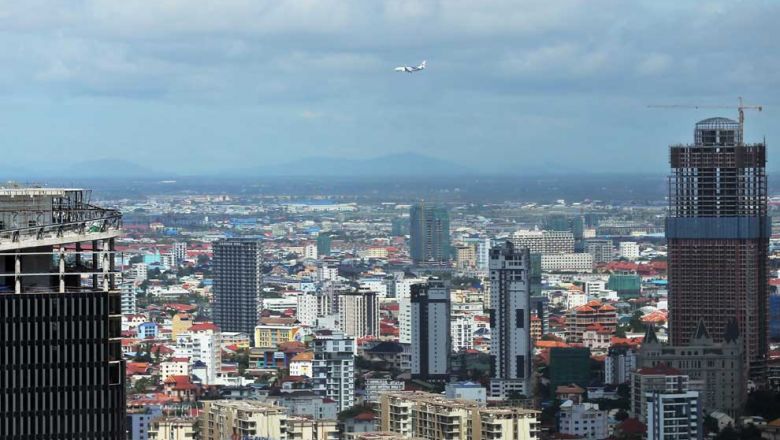Quality infrastructure needed to support economic growth
Quality infrastructure needed to support economic growth
Cambodia sits at a crossroads in the Asean region, potentially making it a key part of regional economic development and trade flows, though improved infrastructure and more innovative financing approaches are still needed, infrastructure experts meeting in Phnom Penh said yesterday.

Speaking at a dialogue session organised by the Japanese government, experts discussed the opportunities and challenges for infrastructure development within the Asean region.
Yuichi Sugano, chief representative of the Japan International Cooperation Agency in Cambodia and one of the panellists, highlighted the Kingdom’s central position along the Southern Economic Corridor, an international trunk route that links Vietnam, Cambodia, Thailand and Myanmar.
“Improving the corridor has a direct impact on the socio-economic health of the region,” he said. “Nearly half of [the corridor] passes through Cambodia and conditions in Cambodia have been improving year by year.”
However, Sugano noted that the infrastructure capacity of the Kingdom lags behind that of neighbouring Vietnam and Thailand, though he said Japanese financial assistance has led to significant improvements.
In 2015, Cambodia inaugurated the Tsubasa Bridge, which ps the Mekong River and provides a key land access route to Vietnam. The 2.2-kilometre cable-stayed bridge replaced a congested ferry crossing at the site and was built with $120 million grant from Japan.
“This bridge meant the Southern Economic Corridor, all 1,200 kilometres of it, could be connected by land,” Sugano said.He stressed the importance of developing high-quality infrastructure to support economic growth.
“In Cambodia, with 7 percent economic growth – faster than the average in the region – to keep up this [pace of] growth, high quality infrastructure is needed,” he said. “At the same time, effective maintenance is also needed.”
Japanese infrastructure investments in Cambodia have typically taken the form of grants or official development assistance, with the country providing over $2 billion in aid since 1992.
However, public-private partnerships (PPP) are emerging as a viable mechanism to fund large infrastructure projects, particularly given that the region as a whole will need to invest upwards of $26 trillion through 2030 to satisfy infrastructure demands, according to an Asian Development Bank report issued earlier this year.
Cambodia is seeing a growing number of PPP projects and recently announced it will join an initiative led by the World Economic Forum (WEF), which seeks to increase private investment into infrastructure projects in Asean.
Justin Wood, head of the Asia-Pacific region and a member of the executive committee of WEF, told The Post that the initiative will seek to plug the investment gaps left by government funding.
“We are launching the Asean infrastructure hub to bring private money, private capital, into building infrastructure,” he said. “If you look across all of Asean there is a huge lack on investment. Governments alone don’t have enough money to build the infrastructure that’s needed, so they need private money to help.”
The Kingdom is also seeing a growing Chinese involvement in infrastructure investment, potentially leading to competition between Japanese-led ADB and Chinese-backed Asian Infrastructure Investment Bank.
Penghuy Ngov, director and associate professor at the University of Nagoya’s satellite campus in Cambodia, said during the panel yesterday that competing Chinese and Japanese investments could prove beneficial for countries like Cambodia.
“From the perspective of Asean countries, I think the competition between Japan and China is healthy for us,” he said, adding that the question needed to be asked why some countries borrowed from China versus Japan, or vice versa.
“Another thing to consider is decision making speed,” he said. “China may be faster or they might give better terms.”



